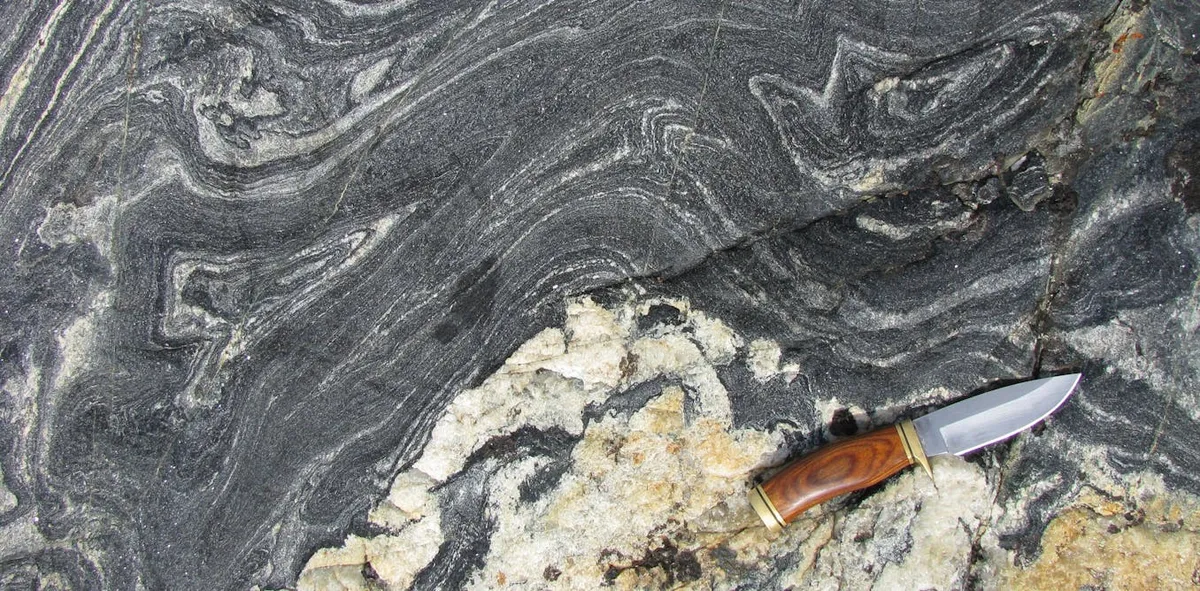
Earth formed approximately 4.6 billion years ago during a geological period known as the Hadean Eon. The term "Hadean" is derived from Hades, the Greek god of the underworld, aptly reflecting the extreme heat and volatile conditions that likely defined the planet during its infancy. By around 4.35 billion years ago, conditions on Earth may have cooled sufficiently for the first crust to develop, potentially allowing life to emerge. However, this early chapter in Earth’s history remains largely mysterious, as geological records from this time are scarce, posing significant challenges in reconstructing the planet's appearance during the Hadean Eon.
Our research team has confirmed that the oldest known rocks on Earth are located in northern Québec, dating back over four billion years. These ancient rocks offer a rare and invaluable window into the origins of our planet. The Hadean Eon is the first segment of the geological timescale, extending from Earth's formation at 4.6 billion years ago to approximately 4.03 billion years ago. The oldest terrestrial materials identified by scientists are rare zircon minerals discovered in western Australia. These zircons, formed as early as 4.4 billion years ago, have withstood the test of time, remaining preserved even as their host rocks eroded away.
Investigations into these zircon minerals have provided crucial insights into the Hadean environment and the formation of Earth’s earliest crust. The chemical composition of the zircons indicates they formed from magmas that originated from the melting of sediments at the bottom of an ancient ocean. This finding suggests that the Hadean Eon experienced rapid cooling, allowing for the formation of liquid water oceans early in Earth’s history. Additional research indicates that the earliest crust was likely mafic, rich in magnesium and iron. However, the existence of this crust was not confirmed until more recent studies.
In 2008, a pivotal study led by associate professor Jonathan O'Neil, who was then a doctoral student at McGill University, proposed that remnants of this ancient crust were preserved in the Nuvvuagittuq Greenstone Belt in northern Québec. This region, located above the 55th parallel in the Nunavik area, contains primarily metamorphosed volcanic rocks, rich in magnesium and iron. The prevalent rock type in this belt is referred to as Ujaraaluk rocks, which translates to “big old solid rock” in Inuktitut. The proposed age of 4.3 billion years for these rocks was based on the detection of variations in neodymium-142, an isotope formed exclusively during the Hadean period via the radioactive decay of samarium-146.
This interpretation of the rocks' age was met with skepticism from several research groups who studied zircons within the belt, suggesting a younger age of no more than 3.78 billion years, which would categorize them within the Archean Eon instead. To resolve these differences, our team returned to the Nuvvuagittuq belt in the summer of 2017 to conduct further investigations. We collected intrusive rocks known as metagabbros, which cut through the Ujaraaluk rock formation, aiming to establish independent age constraints.
Under the leadership of master’s student Chris Sole from the University of Ottawa, we conducted fieldwork that revealed these metagabbros were indeed intrusive, indicating that the Ujaraaluk rocks are older. Back in the laboratory, we collaborated with renowned French geochronologist Jean-Louis Paquette and included the contributions of undergraduate students David Benn from the University of Ottawa and Joeli Plakholm from Carleton University. Utilizing two independent samarium-neodymium dating methods, we assessed the absolute ages of these magmatic rocks, ultimately confirming that the intrusive metagabbros are 4.16 billion years old.
Given that the metagabbros intrude upon the Ujaraaluk formation, it is evident that the Ujaraaluk rocks are even older, solidifying their placement in the Hadean Eon. The study of the Nuvvuagittuq rocks, as the only preserved remnants from this ancient period, presents a unique opportunity to glean insights into the earliest history of our planet. Such research can enhance our understanding of how the first continents formed and how Earth's environment evolved to support life as we know it today.